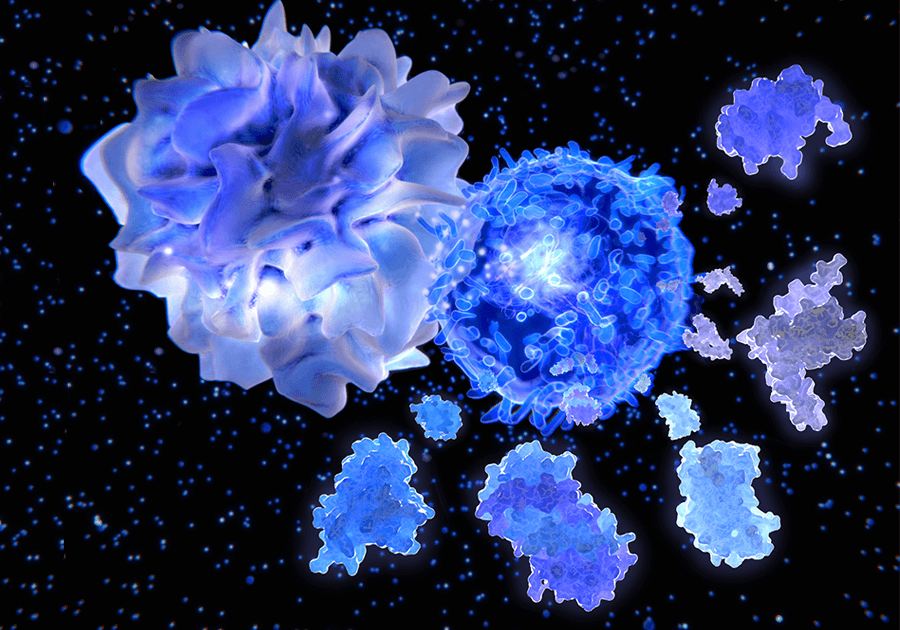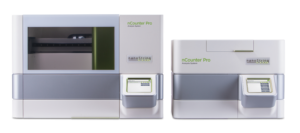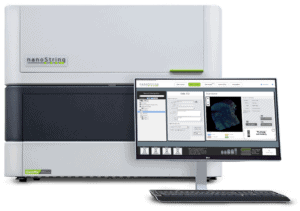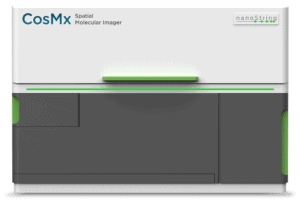
Immunology Research: Understanding the Fine Balance of the Immune System
The immune system often plays a role in the onset and progression of different disorders such as autoimmunity, fibrosis, and cancer. Immunology research often focuses on understanding which cell types, cytokines, pathways, and transcription factors are involved in the balance between immune activation and suppression.
This immunology research can lead to better treatments for chronic inflammation and disease. In addition to traditional bulk immunotherapy gene expression profiling and proteomic analysis, spatial profiling of the location of immune cells in tissue can yield a better understanding of disease pathogenesis, uncovering differences within individuals as well as novel immune related biomarkers for stratification and treatment. Layering on single-cell spatial analysis can help delve deeper into the function and behavior of individual cells, paving the way for groundbreaking discoveries and new therapies in the field of immunology.
Challenges
Immunology research can be challenging due to the sheer number of different cell types involved and the variable response between different individuals dependent on genetics, age, and exposure history. Making meaningful discoveries involves getting a holistic view of both the systemic and localized immune response which often involves integrating datasets from disparate technologies. Translation of immunology research results to the clinic requires reliable preclinical models which don’t always correlate to human studies, and not all patients respond to treatment. Better immune related biomarkers and immunotherapy gene expression profiling signatures are needed to help identify novel targets and predict treatment response.



Your Trusted Partner in Immunology Research
NanoString has been developing innovative research tools for over 20 years and is committed to partnering with the community for immunology research. We offer integrated, multiomic research solutions that allow you to study the dynamic and complex nature of the immune response to autoimmune disorders, transplanted organs and cancer from the level of single cells to multicellular tissue compartments and patient cohorts. Wherever you are headed with your immunology research, NanoString can get you actionable insights from FFPE, fresh frozen tissue, cell lysates, and biofluids.
- Profile the expression of 800+ genes from a single sample with the nCounter® Analysis System
- Spatially profile the whole transcriptome and hundreds of protein targets within distinct tissue compartments and cell populations with the GeoMx® Digital Spatial Profiler (DSP)
- Profile the immune response at the single cell and subcellular level with the CosMx® Spatial Molecular Imager (SMI)
Three Platforms. Unlimited Potential.

nCounter®
Analysis System
- Discover predictive and prognostic biomarkers
- Develop signatures associated with inflammation and immune response
- Evaluate mechanisms of treatment response
- Monitor disease biomarkers in clinical trials

GeoMx®
Digital Spatial Profiler
- Characterize the immune infiltrate in healthy and diseased tissue
- Profile the cellular makeup of the immune response in tissue
- Study the effect of transplanted tissues on the immune response
- Characterize the mechanism of action of drug treatments and vaccinations
- Discover and validate spatial biomarkers for disease onset, progression, and treatment response

CosMx®
Spatial Molecular Imager
- Assess heterogeneity of immune cell population and disease progression
- Discover unique cell-cell interactions
- Define cellular neighborhoods
- Discover functionally relevant multi-cellular niches/communities across any disease state
- Understand the activities of transmembrane proteins and how they initiate signal transduction pathways
Select nCounter Immunology Research Panels
GeoMx DSP Assays for Immunology Research
CosMx SMI Assays for Immunology Research
Immune Cell Type Profiling
Select nCounter panels feature genes that provide unique cell profiling data to measure the relative abundance of different immune cell types.
- To date, 14 different immune cell types have been identified by their gene signatures for inclusion in nCounter panels.
- The panels can be run downstream of flow cytometry to profile specific immune cell populations.

Immune Cell Type Profiling is also available for GeoMx RNA expression data from the Cancer Transcriptome Atlas or the Human Whole Transcriptome Atlas.
- The SpatialDecon script estimates the abundance of 18 different immune cell types within an area of interest.
- The immune cell abundance estimates are spatially resolved, granular and paired with highly multiplexed gene expression data.



Abundance estimates of 18 different immune cell types within 191 regions of interest in a tumor section made from GeoMx Whole Transcriptome Atlas data using the SpatialDecon script. Cell counts are proportional to the wedge size of each color. Figures reproduced with permission from Danaher et al. Nat Commun 13, 385 (2022) under the Creative Commons License.
Spotlight on Success
“With NanoString we gained vital data and, for the first time ever, we were able to see what is happening immunologically in defined regions of the tissue. This data, enabled by NanoString’s platforms and an Allo-Xeno gene expression repository, allowed us to understand both the similarities and the novel aspects underpinning organ rejection in xenograft transplantation compared to human organ transplantation. NanoString’s nCounter and GeoMx instruments harmonized to create a holistic view of the immune response.”

Alex Loupy, MD, PhD
Paris Institute for Transplantation and Organ Regeneration, INSERM
Andrew Pepper, PhD
University of Alberta
Preeyam Patel, PhD
IO Biotech
Case Studies

Publications
Multiomic spatial landscape of innate immune cells at human central nervous system borders
The innate immune compartment of the human central nervous system (CNS) is highly diverse and includes several immune-cell populations such as macrophages that are frequent in the brain parenchyma (microglia) and less numerous at the brain interfaces as CNS-associated macrophages (CAMs). Due to their scantiness and particular location, little is known about the presence of temporally and spatially restricted CAM subclasses during development, health and perturbation.
BCG vaccination stimulates integrated organ immunity by feedback of the adaptive immune response to imprint prolonged innate antiviral resistance
Biologically derived epicardial patch induces macrophage mediated pathophysiologic repair in chronically infarcted swine hearts
There are nearly 65 million people with chronic heart failure (CHF) globally, with no treatment directed at the pathologic cause of the disease, the loss of functioning cardiomyocytes. We have an allogeneic cardiac patch comprised of cardiomyocytes and human fibroblasts on a bioresorbable matrix.
Related Resources






Contact Us
Have questions or simply want to learn more?
Contact our helpful experts and we’ll be in touch soon.


